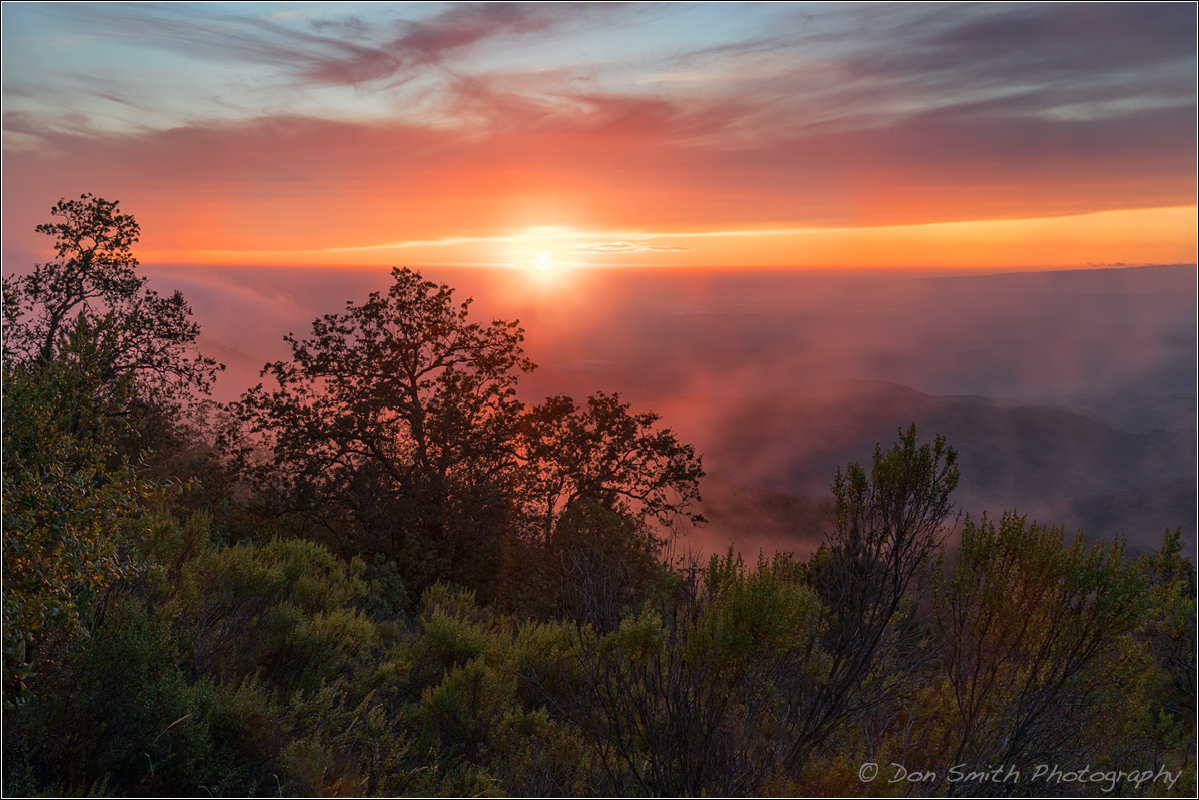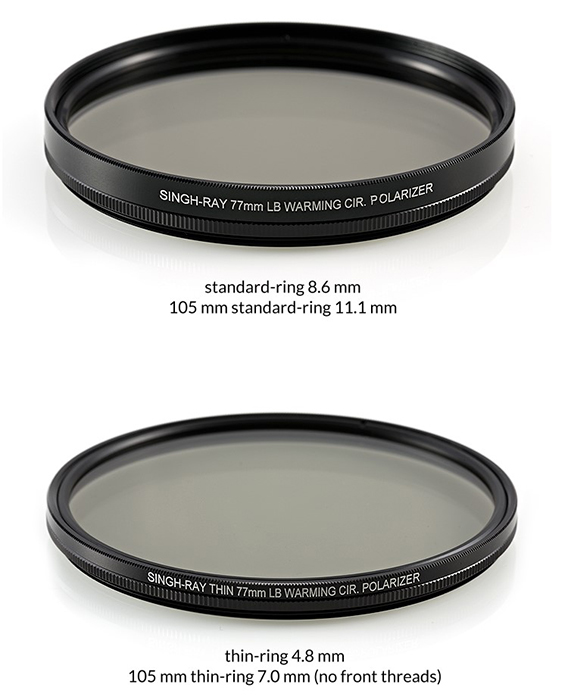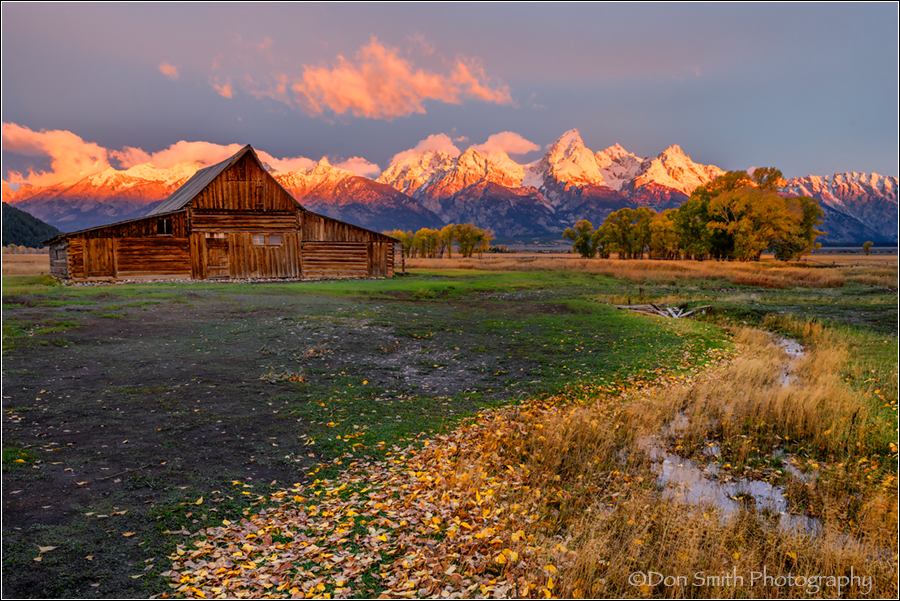The sun sets through fog as seen from Fremont Peak State Park, San Benito County, California (Sony a7R II, Sony/Zeiss 24-70mm, f/22, 1/10th, ISO 100, Singh-Ray Neutral Polarizer)
If you are serious about your landscape photography, there is one filter that should be on each lens in your bag – a polarizer!
Why? Well, that is what I will discuss in this article. But first you need to understand that the one filter that cannot be re-created in post-processing is a polarizer.
Polarizers must do their thing before the light hits the sensor. Once that concept is understood, then we can take a look at five key reasons I have a Singh-Ray Polarizer on every lens in my bag:
1.) Polarizers Increase Contrast and Reduce Haze
Quite simply, a polarizer filters out polarized light (electromagnetic radiation such as light is composed of transverse waves and can be polarized). Light from any source will scatter. A polarizer minimizes this scattered light and in the process, allows for greater contrast (think blue skies and white clouds) and also helps to clean up haze that is present in the scene.
Circular polarizers (as opposed to linear) are best, IMO. They screw into your lens and the outer ring turns one polarizer against another thus helping to minimize reflections. There is no one right setting – it is really your choice and it is best to view the affect though your viewfinder and not by looking at your LCD screen as that will also have some glare to it.
Singh-Ray, IMO, makes the best polarizers currently available and is a key reason I have been using them for the past 30 years. Cheaper polarizers often have rings that can easily strip, making them difficult to remove without damaging the threads on your expensive lenses. They can also degrade or ruin images with lower optical resolution, flare, ghosting and other visual aberrations. In your hand, a Singh-Ray polarizer’s no-compromise construction is clear immediately. On your lens, it will consistently provide unmatched image quality and fidelity.
Singh- Ray LB Warming Circular Polarizer. I recommend thin for any lens less than 50mm. This will help prevent unwanted vignetting.
2.) Polarizers Remove Unwanted Reflections From Non-Metallic Objects
A polarizer will remove reflection from any non-metallic surface. You will get maximum benefit when you frame a scene 90 degrees off axis to the sun. Conversely, you will see little to no change when shooting towards the sun or with the sun at your back. In fact, you may want to remove your polarizer when shooting towards the sun as it may worsen lens flare. NOTE: In the above image, my angle is not directly at the sun and I was able to make the fog stand out a bit more while in-turn saturating the color of the foreground foliage (see #3) for the reason.
Polarizers also work great on cloudy overcast days by increasing color contrast. Again, because the effect can be seen through the viewfinder (I close down my non-shooting eye) it is truly a WYSIWYG (what you see is what you get) filter!
One note of caution should be applied to using a polarizer with a wide angle lens when including a sky as darkening of just a portion of the sky can make your image look splotchy. You can see this by completely rotating your polarizer while looking through your viewfinder. I keep turning the polarizer until I see it over and over, then I back down the effect until the sky looks natural.
Another key use of a polarizer for me is that it reduces glare on the surface of water allowing me to see what is underneath.
3.) Saturates Foliage
One of the main benefits of a polarizer, IMO, is that it helps to remove the waxy sheen that is present on all foliage in nature. This in turn improves contrast and saturates color. In reality, this is my main reason for using a polarizer.
Fall Aspen leaves and fresh snow on Grand Teton Range and T.A. Moulton Barn at sunrise, Grand Teton National Park, Wyoming (Sony a7R, Canon 16-35mm II, Metabones IV Adapter, f/11, 1/4th, ISO 200, Singh-Ray LB Warming Polarizer, Singh-Ray 2 stop GND)
4.) Works as a Neutral Density Filter
An often overlooked benefit of using a polarizer is that it serves double-duty as a neutral density filter often help reduce your overall exposure by 1-2 stops of light. This works great when I am trying to capture daytime lightning. There is no need to add an ND filter – I already have one with my polarizer!
5.) Stack a Polarizer With A Graduated Neutral Density Filter
When using a polarizer in a scene where I have a bright sky, I will often add a Graduated Neutral Density Filter to reduce the scene’s overall contrast and balance the sky with the foreground with no worry of getting an unwanted color cast.
Singh-Ray also offers a wide array of the highest-quality graduated neutral density filters. To find out more, please click here.



